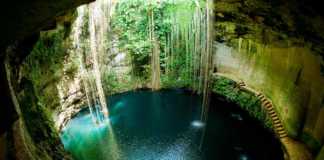Mexico has a long, rich history that contributes to the cultural traditions found throughout the country. Because different indigenous peoples populated different regions of Mexico, some Mexican traditions vary from region to region.
As a result of the influence of Spanish colonisation, the contemporary Mexican traditions are a blend of indigenous and Catholic influences that gives Mexico a unique flavour. Mexicans have many traditions, some of which date back centuries. These traditions make visiting or living in Mexico a unique and colourful experience. Understanding these traditions before visiting Mexico can enrich any visit to this beautiful country.
Contents
- Mexican Traditions
- Top Tours
- Multi-Day Tours
- 1- Fiestas
- 2- Dia de Los Muertos
- 3- New Year’s Eve
- 4- Independence Day
- 5- Cinco de Mayo In Puebla
- 6- Carnival in Mexico
- 7- Semana Santa and Pascua
- 8- Day of the Mariachi
- 9- Dia del Niño
- 10- Guelaguetza Festival in Oaxaca
- 11- Festival Internacional Cervantino
- 12- Voladores
- 13- Dance of the Parachicos
- 14- Quinceañera Party
- 15- Mexican Christmas Traditions
- 16- Mariachi
- 17- Alebrijes
- 18- Mexican Hat Dance
- 19- La Comida
- 20- Use of nicknames by everyone
Mexican Traditions
Top Tours
- Oaxaca Dia de Los Muertos (Day of the Dead)
- México City: Lucha Libre Wrestling Match, Mariachi & Tequila
- Oaxaca: Paint Your Own Alebrije Workshop
Multi-Day Tours
- Premium Mexico in Depth (15 days)- Explore Mayan archaeological ruins, exclusive Mexican food tastings, learn about Mexican crafts and meet conservationists.
- Mexico’s Day of the Dead in Oaxaca (7 days)- Participate in the Day of the Dead festival and explore Oaxaca’s culture, food and artistry.
- Mexico Grande (13 days)- Discover Puerto Vallarta, Guadalajara, Guanajuato and Mexico City.
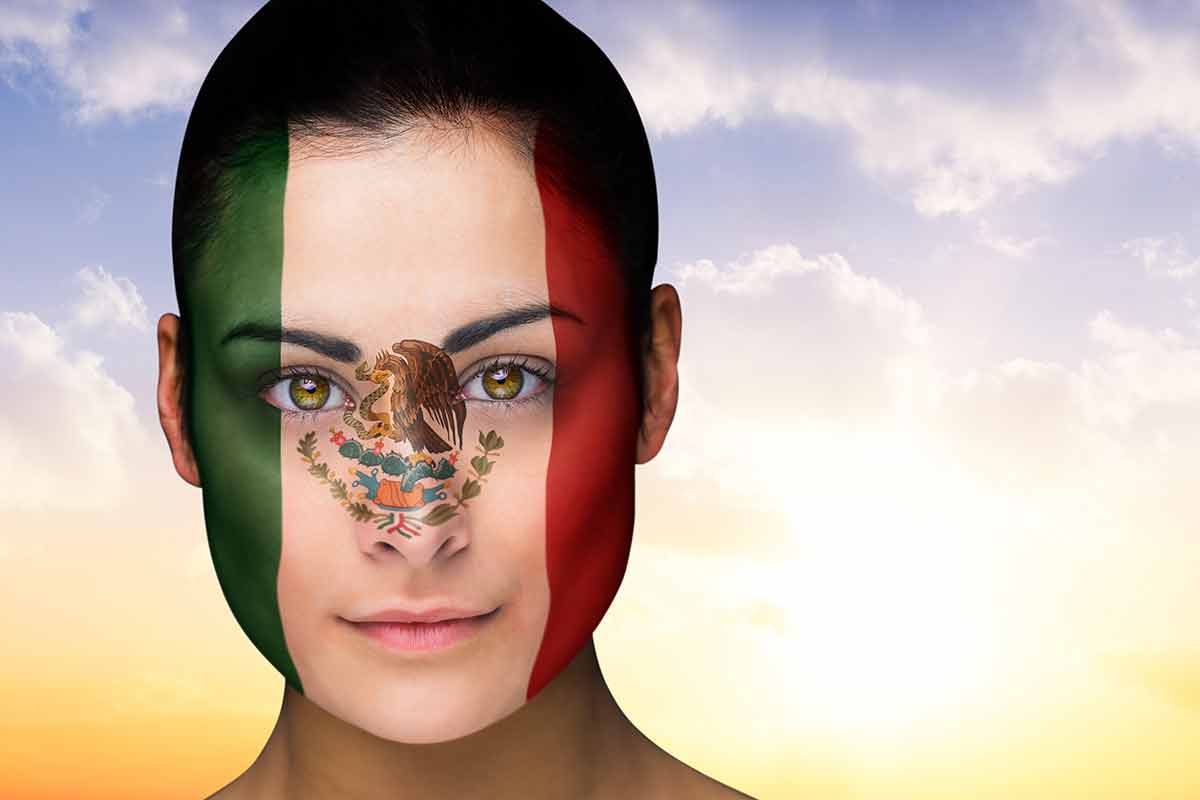
1- Fiestas

The Mexican people love to have fiestas or parties, celebrating everything from birthdays and weddings to farewells and graduations.
These fiestas have distinct characteristics that make them stand out from the parties you see in many other countries.
Fiestas are typically boisterous celebrations filled with laughter, music and plenty of good food.
Depending on the reason for the celebration, fiestas can last anywhere from five hours for a child’s birthday party to two days for a traditional wedding.
Many fiestas have piñatas for kids to hit and get at the treats inside.
Various snack foods are served, such as vegetable platters of carrots and jicama with chile powder.
Other Mexican foods are duritos (a puffed wheat snack in the shape of a wagon wheel served plain or drizzled with Valentina) and esquites (a dish of corn mixed with mayonnaise, lime juice, and chile).
Adults often sip on tequila, beer, and wine. Non-alcoholic beverages include horchata, jamaica tea, and limonada.
Fiestas always include music, usually in the form of mariachi.
Singing and dancing with mariachi hired for the party often goes on for hours, late into the night.
In Mexican cities and towns, visitors can often hear these bands performing as various fiestas are taking place.
Fireworks and firecrackers are also commonly used during fiestas and help contribute to the noise of the celebration. Xoximilco Park puts on a fantastic fiesta show for visitors. Check it out here.
2- Dia de Los Muertos
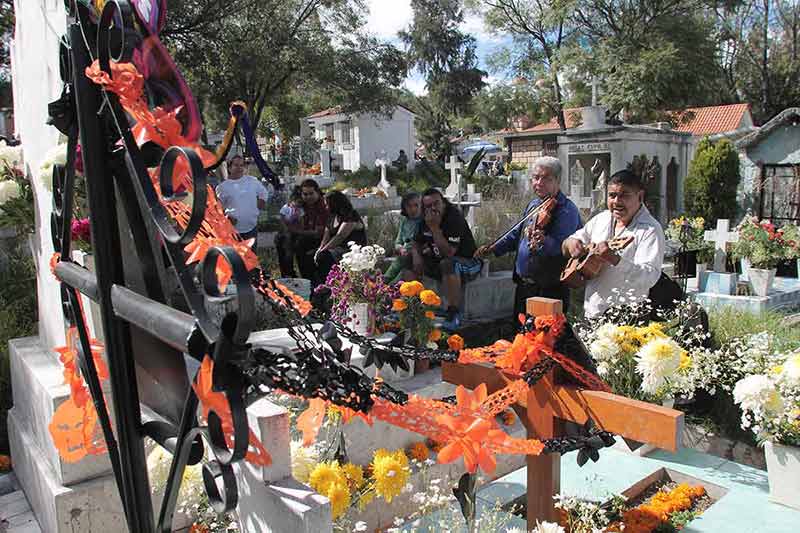
Dia de Los Muertos is celebrated from 1 to 2 November, lasting all night long.
People often spend the night with their families in their homes and cemeteries with altars or ofrendas filled with remembrances of their deceased loved ones.
They make their loved ones’ favourite foods, buy their favourite snacks, and display possessions on these altars belonging to their dead relatives.
They celebrate this holiday with a fiesta, which means food and music are a part of the celebration.
Pan de Muerto sweet bread and sugar skulls are popular foods used in the celebration.
A particular orange flower is sold all over Mexico, the cempasúchil or Mexican marigold and the petals are used to help guide the spirits of the dead to their living families so that they can join the celebration on that night.
Catrines and catrinas are seen throughout the celebrations as children and adults dress up to represent the dead, often with elaborate makeup and costumes. Book your tour in advance to join in on the festivities.
3- New Year’s Eve
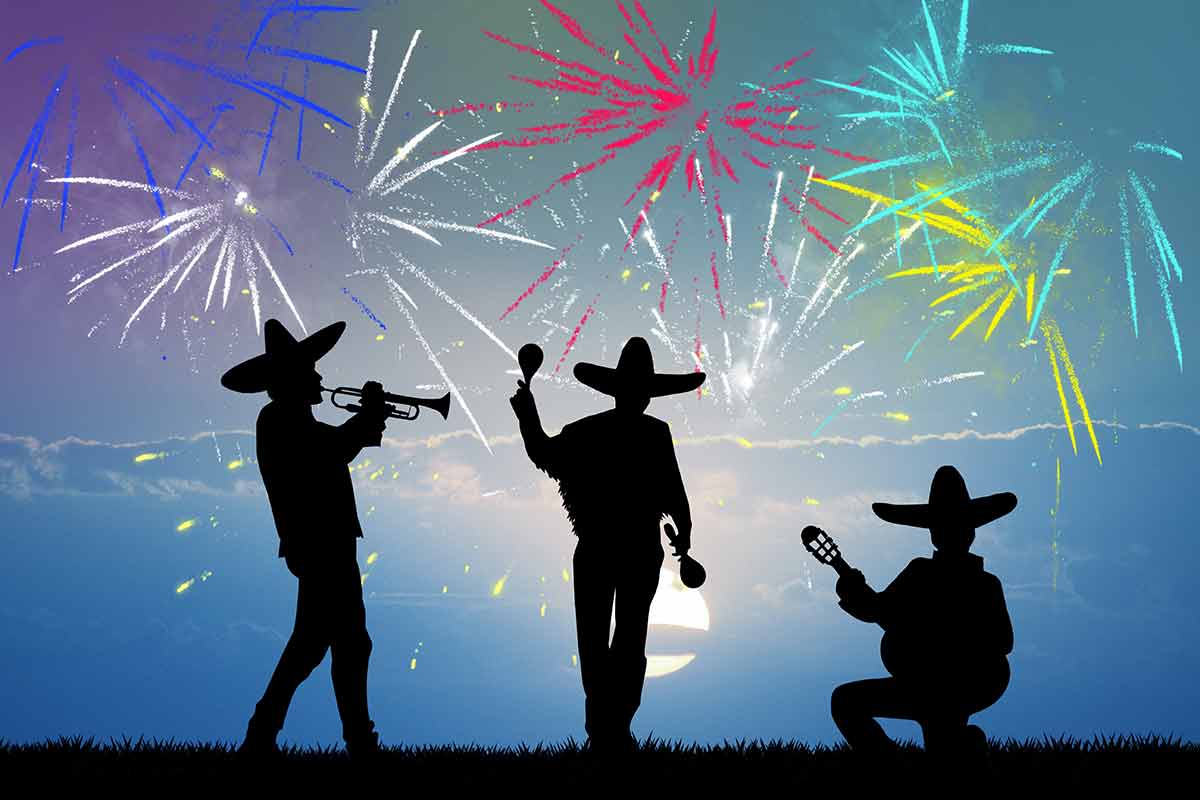
Celebrating New Year’s Eve in Mexico is similar to celebrating in other parts of the world. However, some unique traditions that set Mexico’s celebration apart from the rest can be found.
Traditional Mexican holiday foods such as bacalao, pozole, tamales, and ponche are often served at New Year’s Eve parties.
Before midnight, houses are thoroughly cleaned, pets bathed, and cars washed to symbolise renewal and plan for a clean future.
People wear clothing colours specific to what they want in the new year.
Yellow clothing represents wealth, red symbolises love, green symbolises good health, and white represents hope, peace, and good spirituality.
At midnight, each person has one minute to eat 12 grapes to ensure good luck in the coming months.
After midnight, some people will pack a suitcase and walk around the block to ensure safe travels and adventures in the new year.
Other people will throw a bucket of water from a window to ensure a new beginning or sweep coins thrown on the doorstep into the house to symbolise prosperity.
These traditions all ensure that each new year gets started the right way.
4- Independence Day
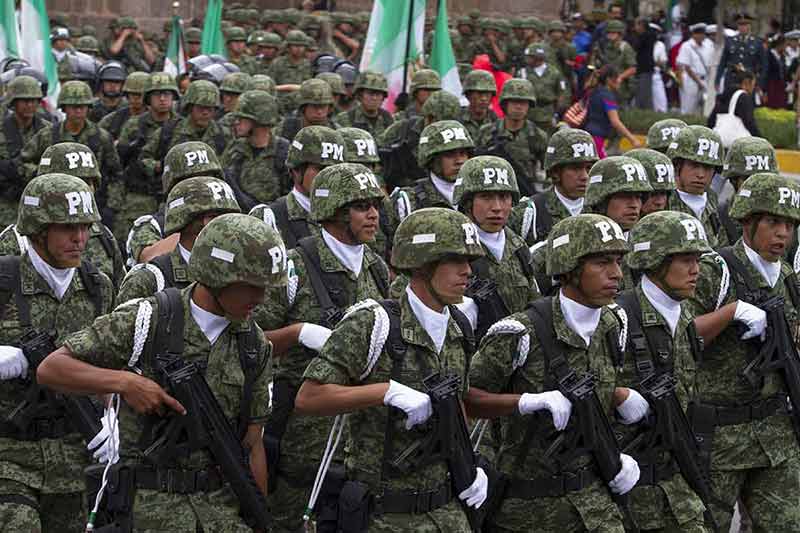
Mexico celebrates Independence Day on 16 September.
This day provides a source of enormous pride for the Mexican people and symbolises a hard-fought war against Spain to gain their independence.
The celebration begins at the end of the day on 15 September when crowds gather in municipal squares across the country to reenact “El Grito,” the traditional cry for revolution at midnight that started with Father Hidalgo, the father of the revolution.
The rest of that day is filled with fiestas, fireworks, and parades and people wear clothing of reds, greens, and whites, the colours of the Mexican flag.
Many people eat a popular dish at this time of the year called Chiles en Nogada, a stuffed poblano pepper with a walnut cream sauce sprinkled with pomegranate seeds and parsley, representing the colours of the Mexican flag.
5- Cinco de Mayo In Puebla
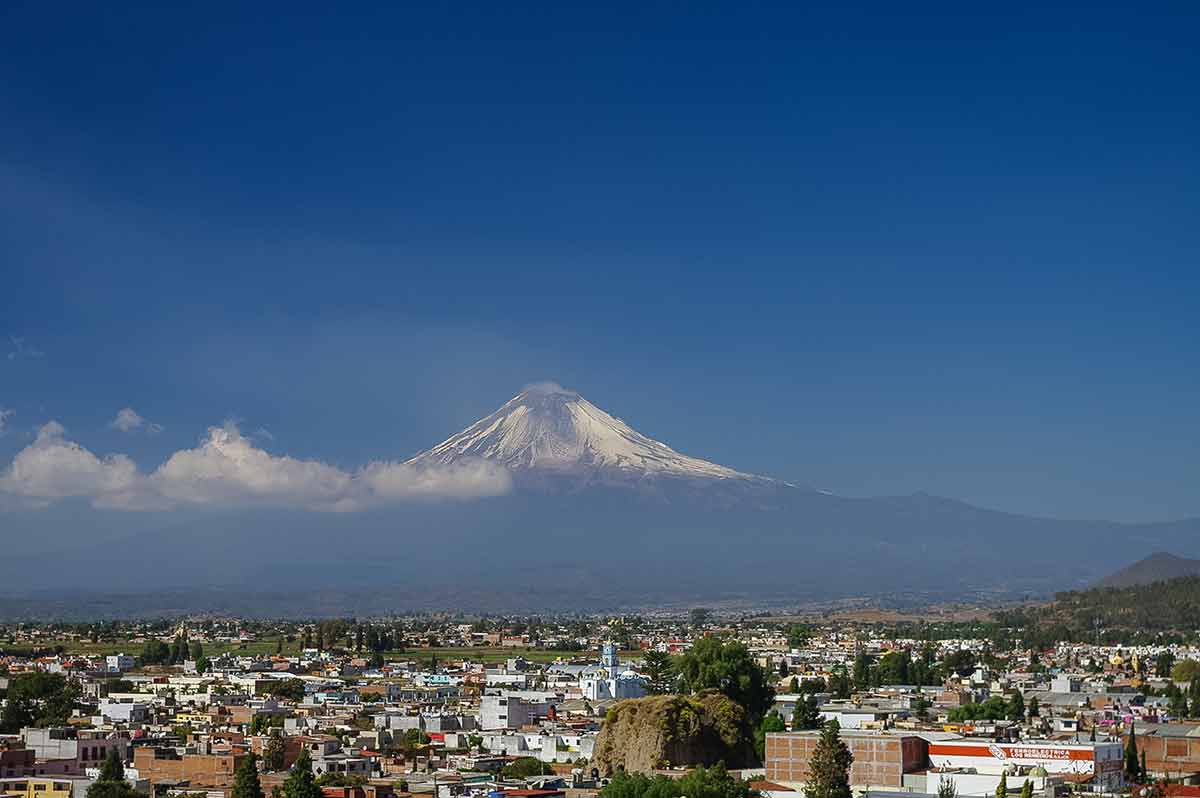
Cinco de Mayo is not celebrated anywhere in Mexico except Puebla, the location of a battle that Mexico fought against Napoleon’s French army on this day in 1862.
The people of Puebla celebrate this day with reenactments, parades, and fiestas.
Starting in 2012, in conjunction with the Cinco de Mayo celebration in Puebla, they also host the International Mole Festival, making food a big part of the celebration.
It’s worth taking a full-day sightseeing tour with a local to make sure you don’t miss anything.
6- Carnival in Mexico
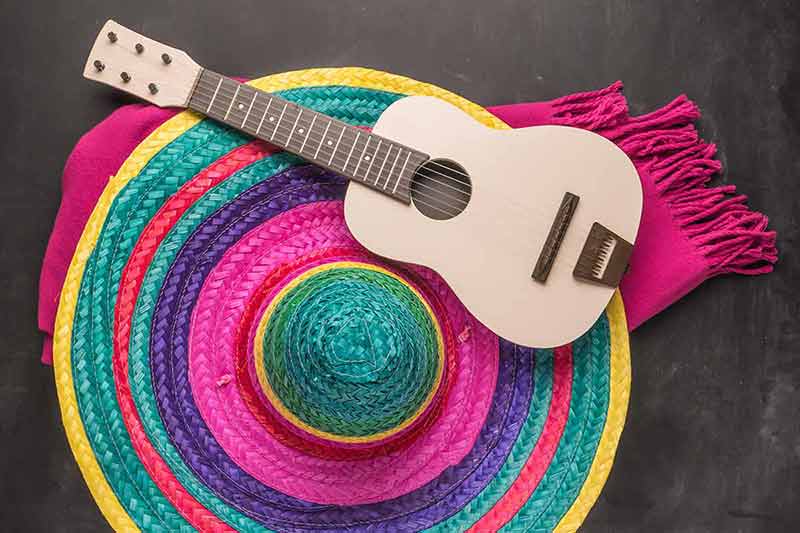
Mazatlán and Veracruz are home to two of the biggest celebrations of Carnival in the world.
Spain introduced this celebration to Mexico during colonisation and Mexicans added an exotic flair to it by incorporating many elements of Mexico’s indigenous celebrations and traditions.
Carnival takes place during the nine days leading up to Ash Wednesday, the start of the Catholic Lenten season.
Carnival kicks off with the burning of an effigy.
A Carnival King and Queen are chosen to preside over the event.
Parades filled with revellers in colourful and intricate costumes dance through the streets every day.
Live music and dancing fill the square at the centre of each city.
Carnival ends when Juan Carnaval, the spirit of Carnival, is buried on Shrove Tuesday.
A few other Mexican cities also celebrate Carnival but on a smaller scale, making it a colourful and exciting time to visit these Mexican cities.
7- Semana Santa and Pascua
Semana Santa is a holy week that starts on Palm Sunday and ends on Holy Saturday, the day before Easter Sunday.
This week is characterised by many pilgrimages to Catholic holy sites throughout Mexico.
Many pilgrimages take place along major highways between towns or within large cities.
Pascua occurs during the week following Semana Santa.
Many Mexicans take the week off and travel to beaches and other places with water because bathing in water at this time symbolises renewal and rebirth.
8- Day of the Mariachi
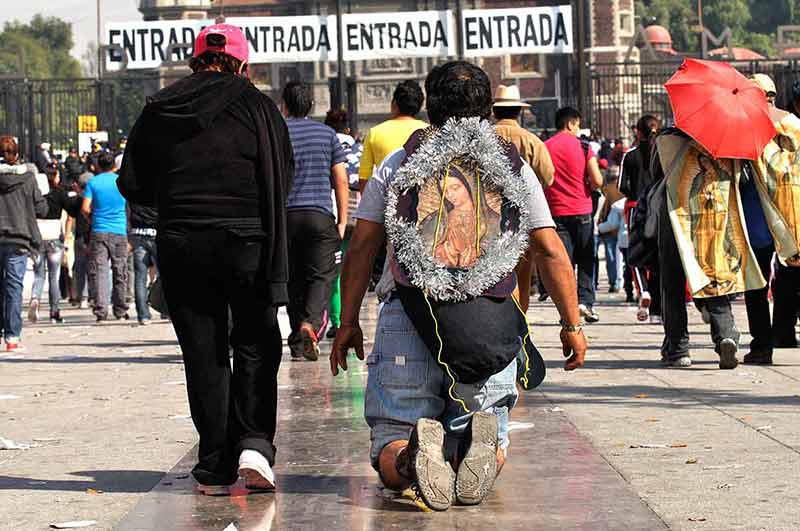
Santa Cecilia is the patron saint of musicians, and each year on 22 November, the Day of Saint Cecilia, more commonly called the Day of the Mariachi, is celebrated.
Musicians from all over Mexico celebrate this day.
In Mexico City, mariachi bands and other musicians gather in Mariachi square, Plaza Garibaldi, and play together as they walk in a procession to La Basilica de Guadalupe, where a mass is held in honour of Saint Cecilia.
Mexico City hosts the largest fiesta in Mexico on this day, full of music, dancing, and drinking.
Other cities celebrate their mariachi but on a smaller scale.
9- Dia del Niño
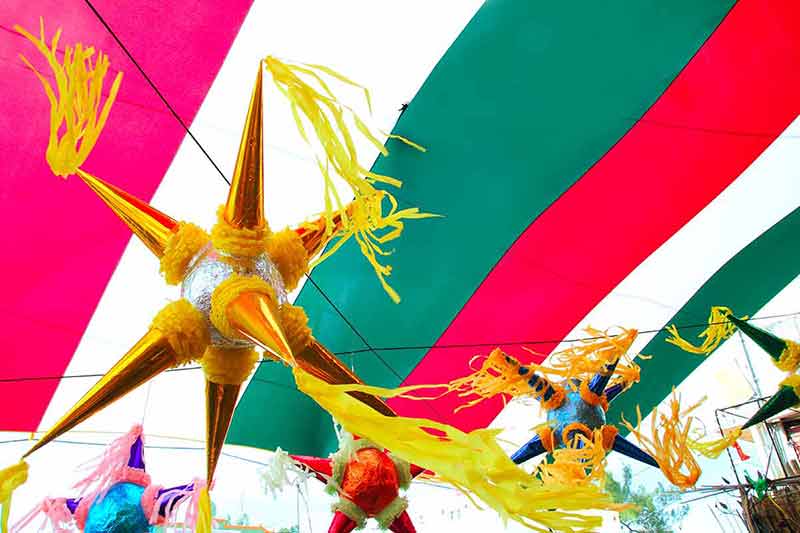
The Day of the Child, Dia del Niño, is celebrated on 30 April.
On this day, children all over Mexico receive gifts from their parents and candies from their teachers.
Instead of classes, schools host large fiestas with piñatas, games, and dancing for students.
People will pass out candies and small toys to children in malls, markets, and on the street.
Special events occur all over Mexico, and this is a major day of celebration.
10- Guelaguetza Festival in Oaxaca
The Guelaguetza Festival in Oaxaca predates the Spanish occupation of Mexico.
Originally, this July festival was celebrated in honour of the goddess of maise, but over time, this indigenous celebration incorporated some Catholic elements and now it is a large fiesta that celebrates the culture and history of the indigenous people from this region.
The traditional dances and dresses and the artisanal crafts and foods from several different regions of Oaxaca are displayed during the festival.
The largest Guelaguetza is celebrated in Oaxaca City, but some surrounding villages also celebrate this festival.
11- Festival Internacional Cervantino
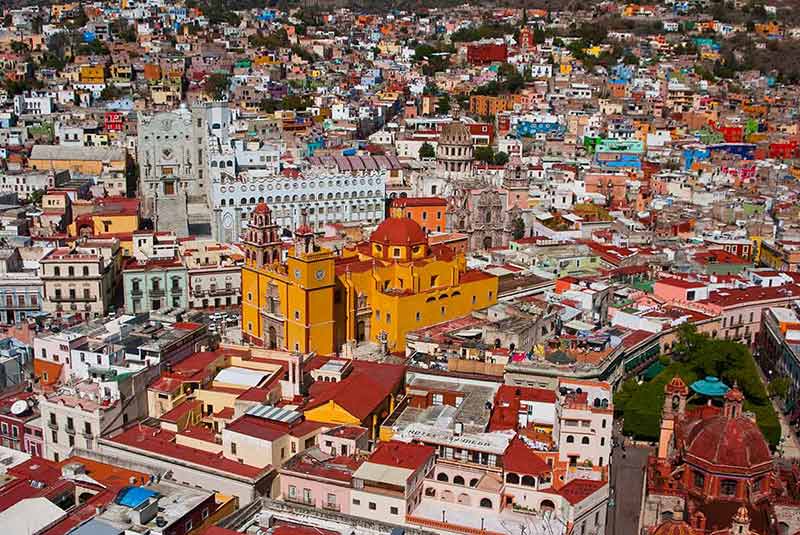
The International Cervantino Festival takes place each fall in the town of Guanajuato.
It is one of the world’s four most important art festivals, drawing thousands of artists worldwide to display their creative talents in music, theatre, opera, literature, dance, plastic arts, and audiovisual media.
The festival started in 1953 with a professor at the University of Guanajuato who took theatre into the streets using the works of Miguel de Cervantes Saavedra.
This is the most significant cultural event in the Mexico/Latin-American region and is an important new tradition in Mexico that celebrates diversity and inclusion in art.
12- Voladores
Los Voladores de Papantla are performers who dance in the skies using a tall wooden pole and ropes tied to their feet.
This ancient dance is an indigenous ritual of fertility that originated with the Totonacs.
The dancers wear clothing to represent birds and dance to the sound of a flute and drum.
They begin by dancing around the base of the wooden pole before five of the dancers climb up to the top.
Once they reach the platform at the top of the pole, one of the men sits at the top and plays the flute and drum.
As the platform begins to spin, the other four dancers leap out with a rope attached to their feet and dance around the pole in the air as they are slowly lowered to the ground.
It is an impressive feat and a unique tradition that can be seen in several towns all over Mexico.
13- Dance of the Parachicos
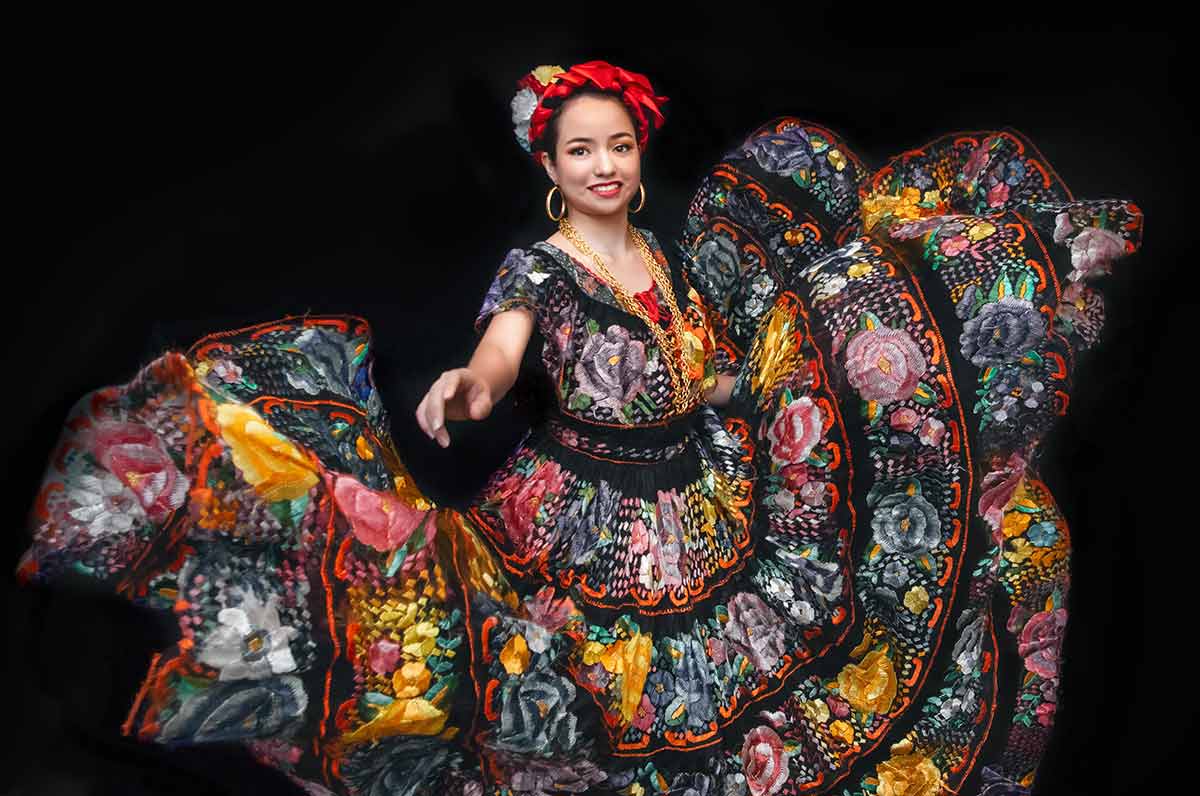
A Great Feast occurs from 4 January to 23 January in Chiapa de Corzo in the state of Chiapas.
This traditional festival honours three Catholic saints.
The dance of the Parachicos only occurs for six days during the feast, starting on 15 January.
This important part of the Great Feast is the offering presented to the saints.
The Parachicos parade and dance through the town in a large procession and wear hand-carved wooden masks, a headdress, and serapes.
The tradition of dancing and carving the masks is passed down from generation to generation.
The group of young-looking Parachicos is led by a man with a mature-looking mask, the Patrón, who traditionally carries a whip and a guitar while playing the whistle and is accompanied by a drummer.
This dance, a mix of Spanish and Indigenous traditions, has lasted for three centuries.
During those three centuries, there have only been 20 different Patróns.
14- Quinceañera Party
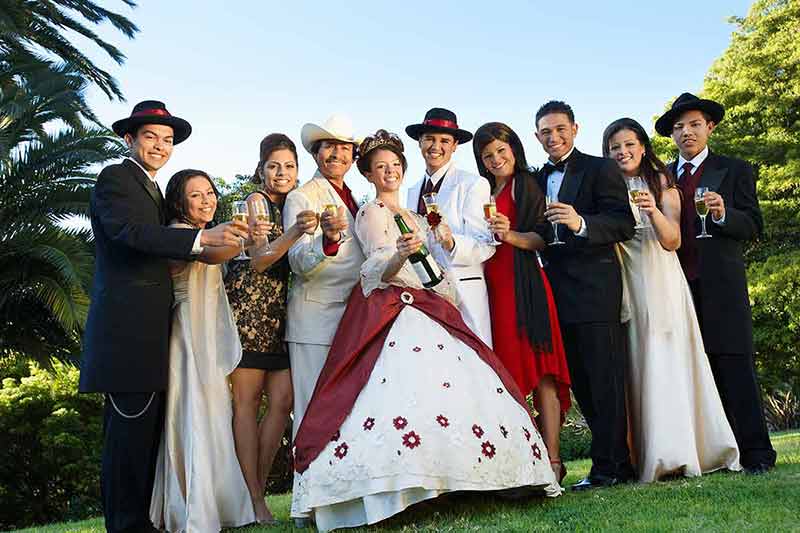
A quinceañera is a fiesta thrown for a 15-year old girl.
This party is elaborate and full of the symbolism of a girl growing into womanhood.
The day mimics the events of a typical wedding day, starting with a Catholic mass attended by the family, godparents, and friends, followed by a large reception.
The celebrated girl has a court of girls and boys that stand up with her at the reception for the dancing.
The most special dance is a choreographed type of waltz.
The girl of honour is given high-heeled shoes, a purse, and other gifts that symbolise her new status as a woman.
There is typically a fancy cake, food, and music, similar to what would be found at a wedding reception.
This tradition originated in pre-Hispanic Mexico to signal that the girl was ready for marriage and, after colonisation, adapted to some of the rituals of the Catholic church.
It is a sign that the girl is ready to formally date in more modern times, although even that message has been lost as societal norms continue to evolve.
Many modern girls celebrate their 15th birthday by not having a quinceañera and view the tradition as archaic.
15- Mexican Christmas Traditions
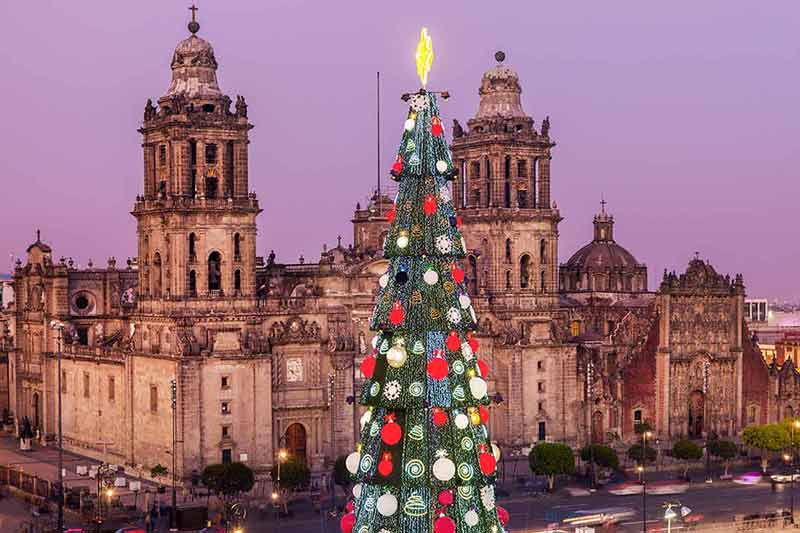
Christmas in Mexico is full of rich traditions and is a joyous time of year.
Dia de Guadalupe on 12 December is the official kickoff to this holiday and people attend mass followed by fiestas where they set off fireworks and eat buñuelos.
From 16 December to 24th are the nightly posadas, Christmas parties that mimic the Christian story where Mary and Joseph search for an inn.
Children process through a neighbourhood led by a costumed Mary and Joseph, singing the posada song, looking for somewhere to spend the night (or in this case, have a party).
Each night, the posada is hosted by a different house and these fiestas are full of food, music, and fun with piñatas and Christmas carolling.
These parties typically serve tamales, buñuelos, bacalao, and ponche.
Christmas Eve, or Nochebuena, is when children traditionally receive gifts from the baby Jesus, not Santa Claus.
The posada on this night typically lasts all night long and does not end until Christmas morning.
16- Mariachi
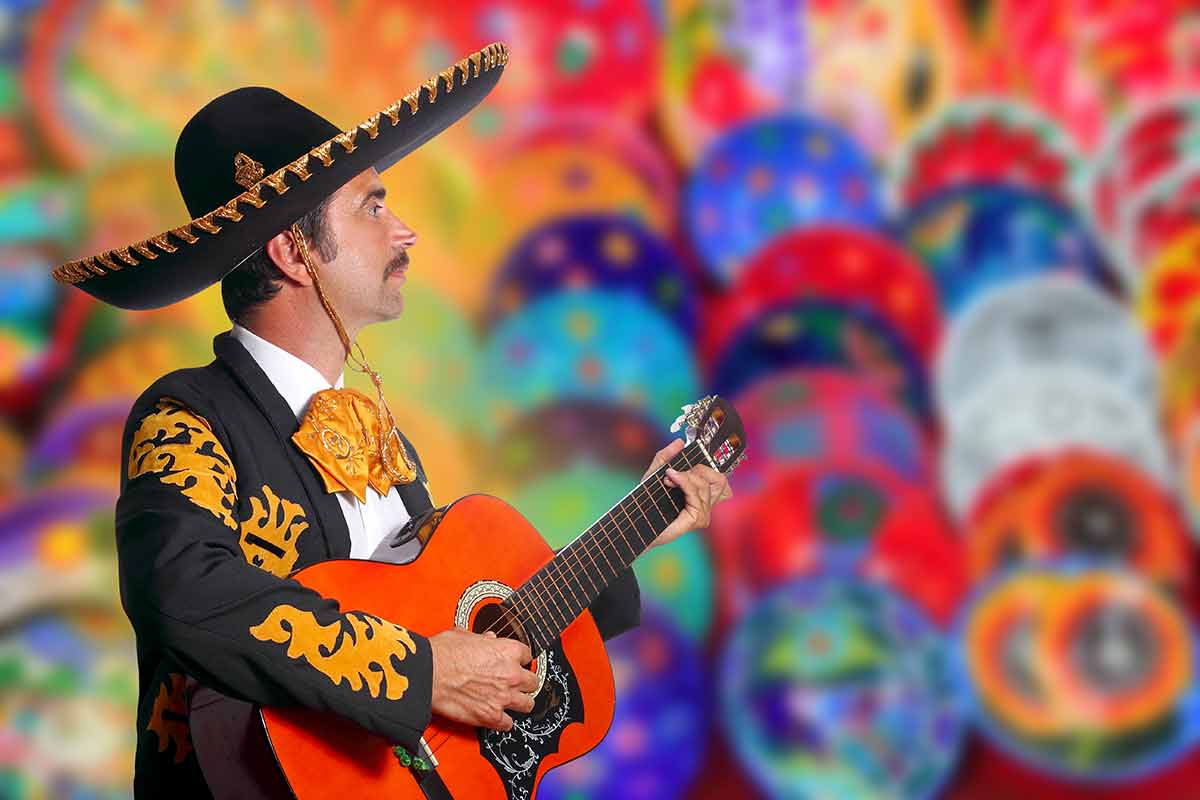
Mariachi refers to an ensemble of musicians who play traditional Mexican music.
The smaller mariachi ensembles typically incorporate vocalists, two types of guitars, violins and trumpets.
Larger mariachi performances may include an entire orchestra.
The term mariachi also refers to a person who performs in a mariachi band.
Traditionally, a mariachi is a male performer who dresses in the costume of a charro or cowboy from Jalisco.
These tight costumes have heavily embroidered trousers and short jackets, a large, wide bow tie at the neck, boots, and a heavily embroidered sombrero.
Women sometimes participate in mariachi performances, often wearing an embroidered shirt, flowing, colourful skirt, and a shawl.
Popular mariachi songs include “El Son de La Negra”, “Cielito Lindo”, “El Mariachi Loco Quiero Bailar”, “Mexico Lindo y Querido”, “Las Mañanitas”, and “Volver Volver.”
Vicente Fernandez and Pedro Infante were two of the most popular mariachi singers in Mexico.
17- Alebrijes
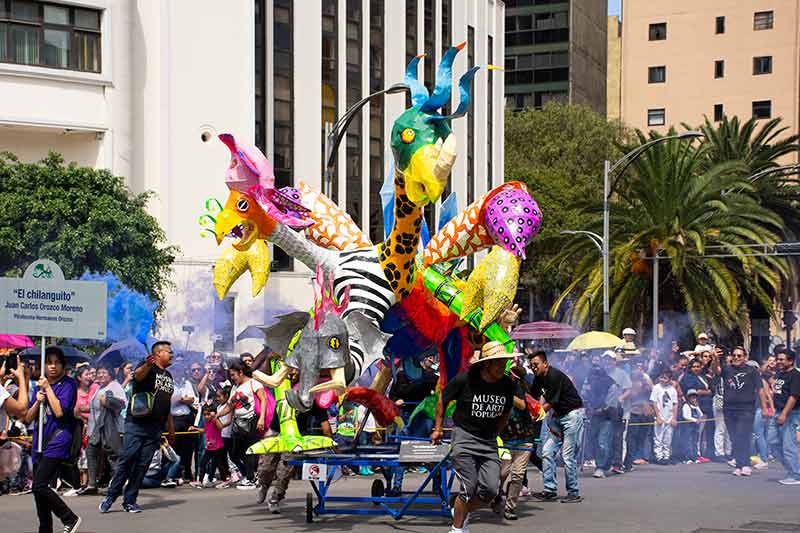
A man from Mexico City named Pedro Linares Lopez invented alebrijes in 1936 based on his imaginings during a fever dream.
He dreamed about combining parts of different animals to create fantastical creatures.
Even though Linares Lopez created the brightly coloured alebrijes from cardboard, a small town in Oaxaca, San Martín Tilcajete, also started creating alebrijes.
However, the artisans in this small town use copal wood to carve the alebrijes instead of cardboard.
No matter what material the alebrijes are made from, they are painted with bright colours and patterns.
Many Mexicans believe that alebrijes can protect homes from evil spirits by scaring them away. For an immersive experience, try this workshop where you will learn to paint your own alebrijes.
18- Mexican Hat Dance
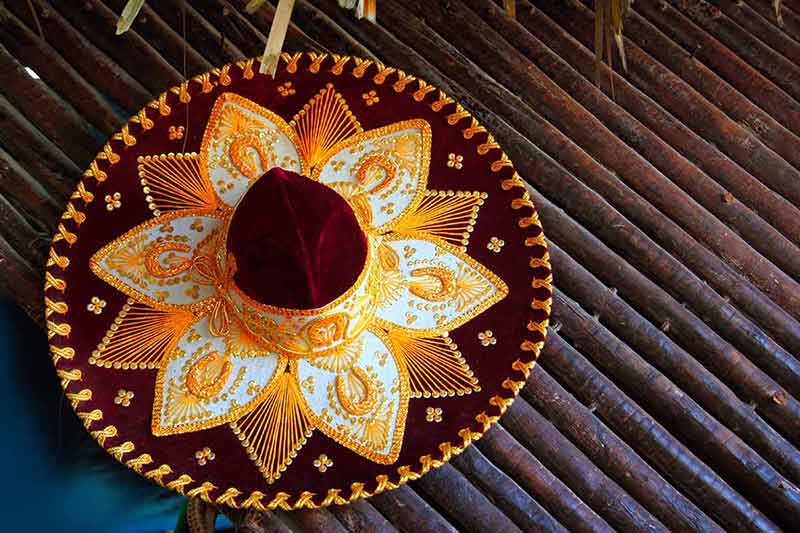
The Mexican Hat Dance, or Jarabe Tapatío, is Mexico’s national dance performed by couples celebrating romantic courtship.
The male dancers wear a charro suit, with intricately-embroidered trousers and a short jacket, a wide bowtie, boots, and a sombrero.
Female dancers wear a long, colourful skirt and intricately-embroidered blouse.
A mariachi band often accompanies the dance.
19- La Comida
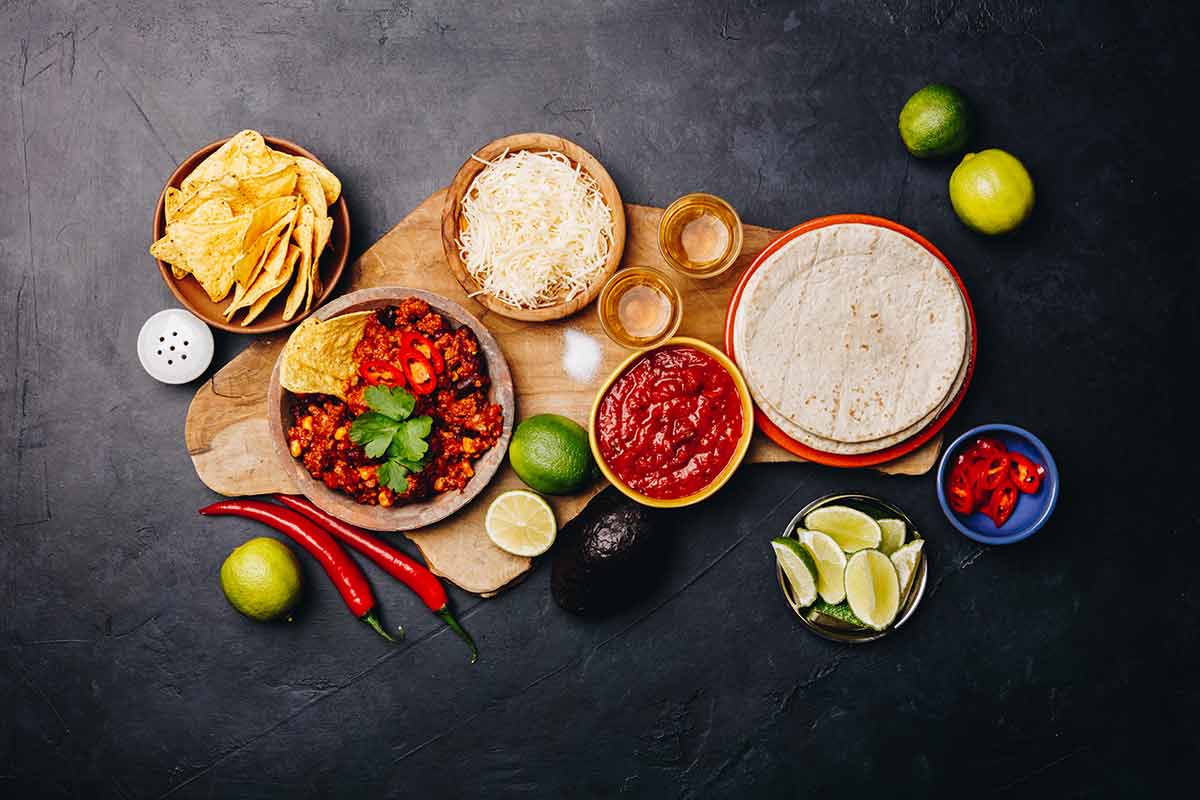
In Mexico, there are three mealtimes, and La Comida is the biggest meal of the day, occurring around 2 to 3 pm.
Foods served at la Comida are typically more than one course and include a soup or salad starter, a main entree, and a dessert.
This meal is served with plenty of fresh tacos and salsas.
Breakfast typically occurs around 9 to 10 am.
Breakfast fare is light – eggs, fruit, or tacos are popular foods served during this meal.
Dinner is also a light meal usually served around 8 pm, and tacos are a popular choice for this meal.
20- Use of nicknames by everyone
In Mexico, nicknames are popularly used by everyone.
Teachers use nicknames for their students, often referring to them as “cariños” (sweetheart) and “preciosas” (precious).
Students often use the nickname “profe” (professor) for their teachers.
Parents often refer to their children or other loved ones as “gordo or gordito” (fatty) or “muñeca” (doll).
Lovers may call each other “amor” (love) or “reina or rey” (queen or king).
Friends make up all kinds of crazy nicknames for each other – Bomba (bomb), Negro (dark-skinned), Gordo (fatty), Güey (dude), Primo/a (cousin), and Güero/a (light-skinned).
The ending “-ito” (for males) or “-ita” (for females) is a modifier that means something is small in size and can be added to the end of many nicknames.
It is typically used for children’s nicknames or the elderly, such as “abuelito/a” (little grandpa/grandma).
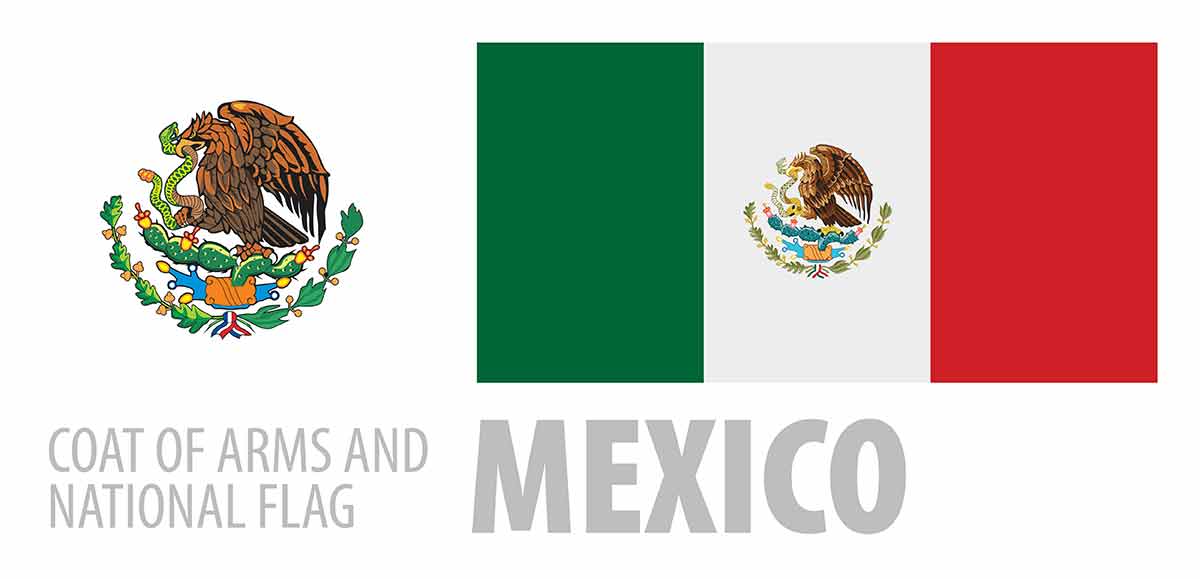
Plan Your Trip

Rent A Car – Find the best car rental rates at Discover Cars. They compare car hire companies to provide you with the best deal right now.

Find A Hotel – If you’re curious about this article and are looking for somewhere to stay, take a look at these amazing hotels.
